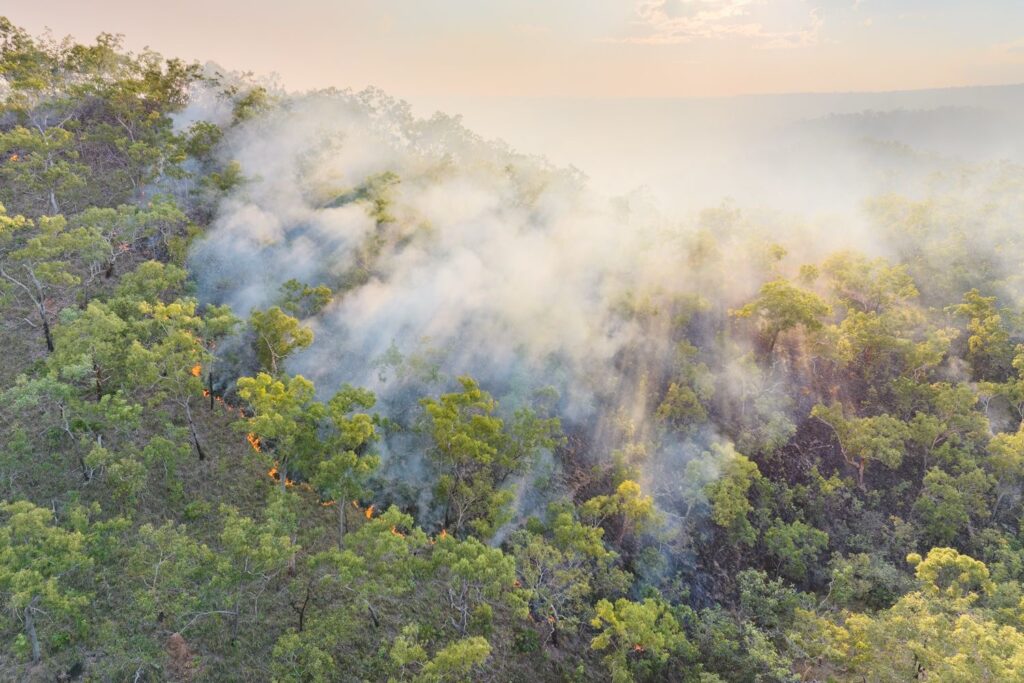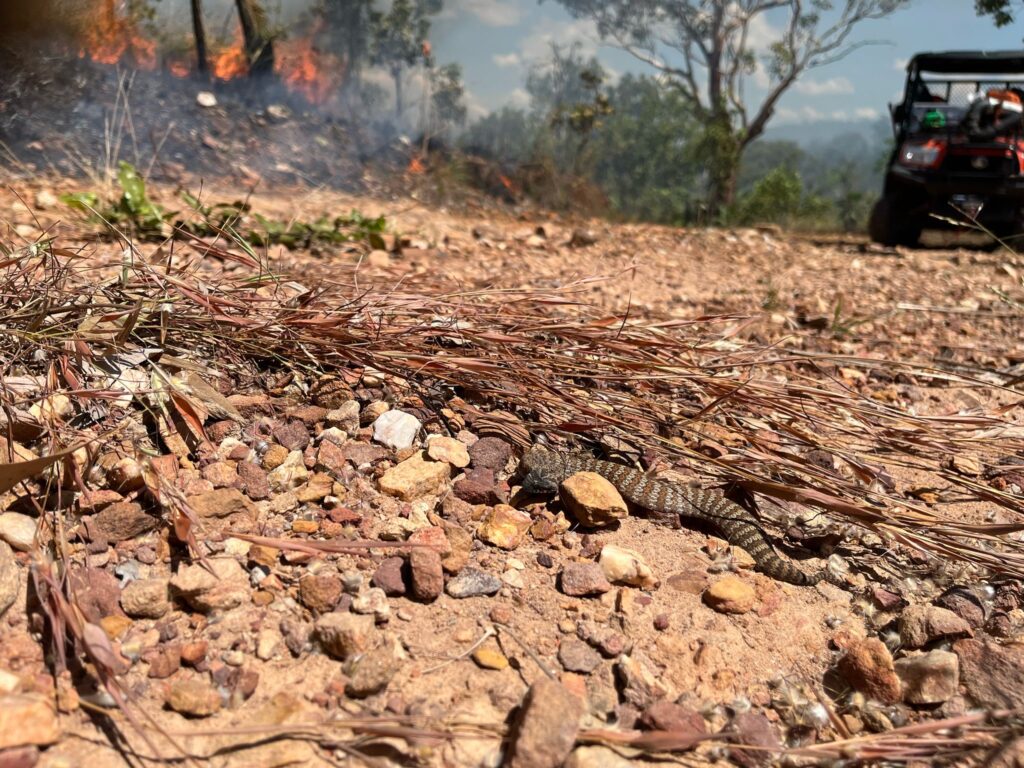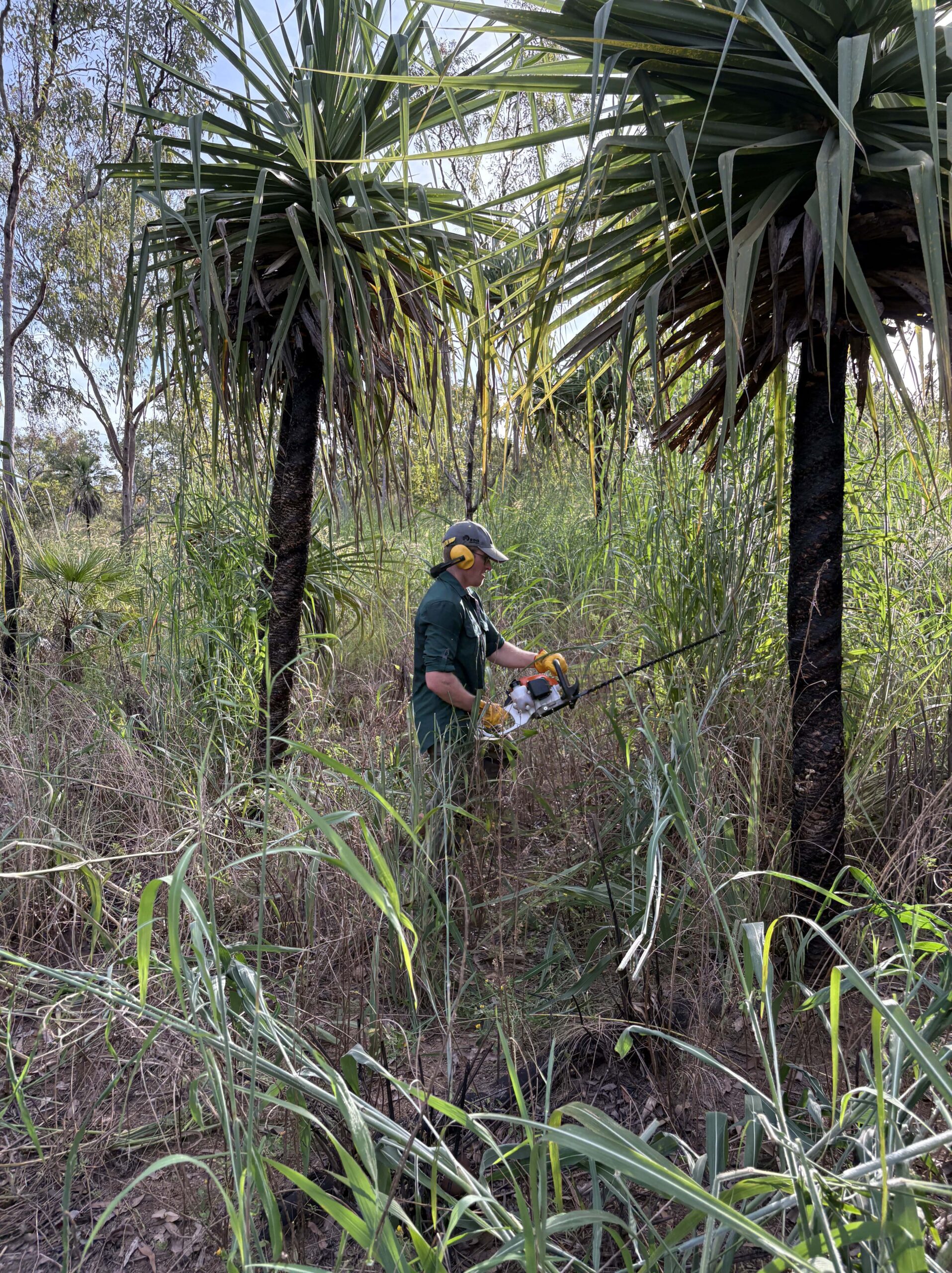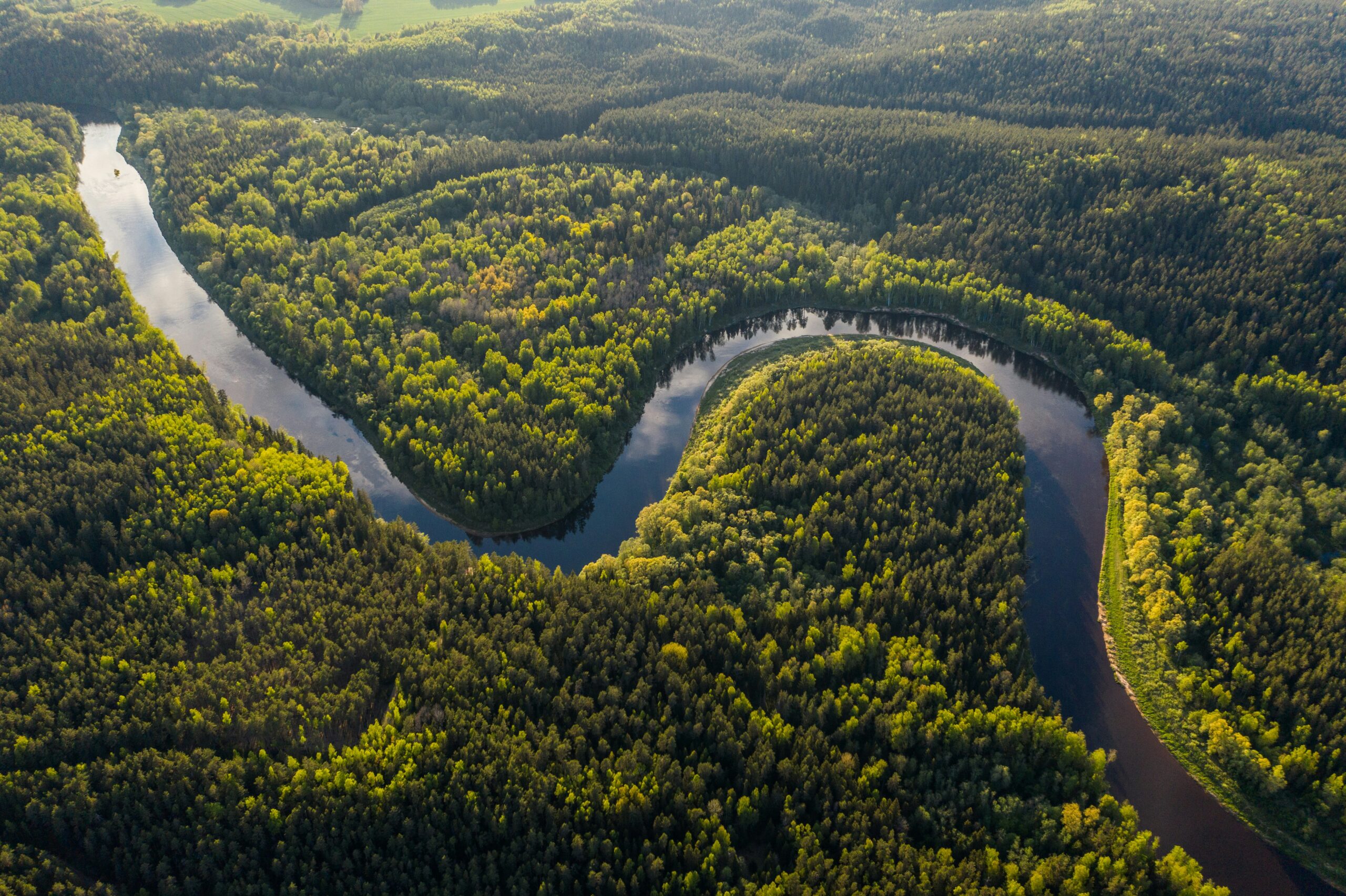As the wet season gives way to the relieving dry months in the Australian outback, some patches of grass remain green and lush while others wither and turn golden-brown.
In many cases, it is Gamba grass that endures – and thrives – in this transition. Native to the subtropical savannahs of Africa, it was introduced to Australia as cattle fodder in the 1930s and used systematically from the 1980s onwards. With in-built resilience against both tropical climates and infertile soils, Gamba grass was seen as both effective and efficient: hardy against droughts, and supporting more cattle per unit of land.
But it has quickly spread beyond grazing paddocks to create dense, verdant mazes stretching up to 4m high. In Australia’s Northern Territories alone, latest estimates suggest that Gamba grass covers over 500,000 hectares of land – larger than the metropolitan area of Istanbul or the entire country of Trinidad and Tobago. Disturbingly, this even includes 30,000 hectares – or 20% – of Litchfield National Park. Accordingly, this is no longer viewed a local or regional problem: since 2019, Gamba grass has been declared a Weed of National Significance, meaning that the sale and transport of Gamba grass seeds is now prohibited across all of Australia.
And this problem is far more than an eyesore. Gamba grass is a serious fire hazard, carrying up to 10 times the fuel load of native grasses and resulting in fires up to twelve times as intense. Gamba grass fires also burn up to 9 times as high as native grass fires, reaching up to 13 metres into the tree canopy. In a country where burning is both a sensitive, traditional practice and an inevitable part of robust land management, Gamba grass is now an existential threat to nature and society alike. Indeed, fires involving Gamba grass have been calculated to cost up to 26 times more to manage – and the proliferating weed is also threatening the country’s emerging carbon offsetting business.
The responsibility for this growing externality is not yet fully established. While state governments have allocated token resources and personnel, they have in the main passed the buck to private landholders like Cara and Etienne Littlefair. Biodiversity experts turned wildlife photographers, Cara and Etienne show both deep-rooted passion for the untamed environment of their 500 hectare block two hours’ drive south of Darwin, and cool-headed responsibility for the livelihood that it sustains. Each year brings many weeks of hours’-long sorties into the bush to identify and eliminate Gamba grass outbreaks. To be most effective, this must be done after the last of the seasonal rains, but before the dry winds have dispersed the seeds – which can number over 240,000 per plant.
Eliminating Gamba grass at scale requires a blend of the crude and the sophisticated. The couple have invested in a drone to map hotspots and a modified all-terrain vehicle (ATV) to reach them; for now, though, the remaining work is manual labour. First, the weeds must be cut to prevent them from seeding: the couple rely on a pair of powerful hedge trimmers to cut through imposing thickets at speed. Then, the weeds must be sprayed with glyphosate herbicide to kill them for good. Cara and Etienne either spray directly from the 200-litre tank on the back of their ATV, or from refillable 15-litre backpacks, which they use to access trickier hotspots on foot. The couple easily use up the 200-litre tank each day during their outings. By contrast, the Northern Territory government provides only 10 litres of free herbicide per landholder each year.
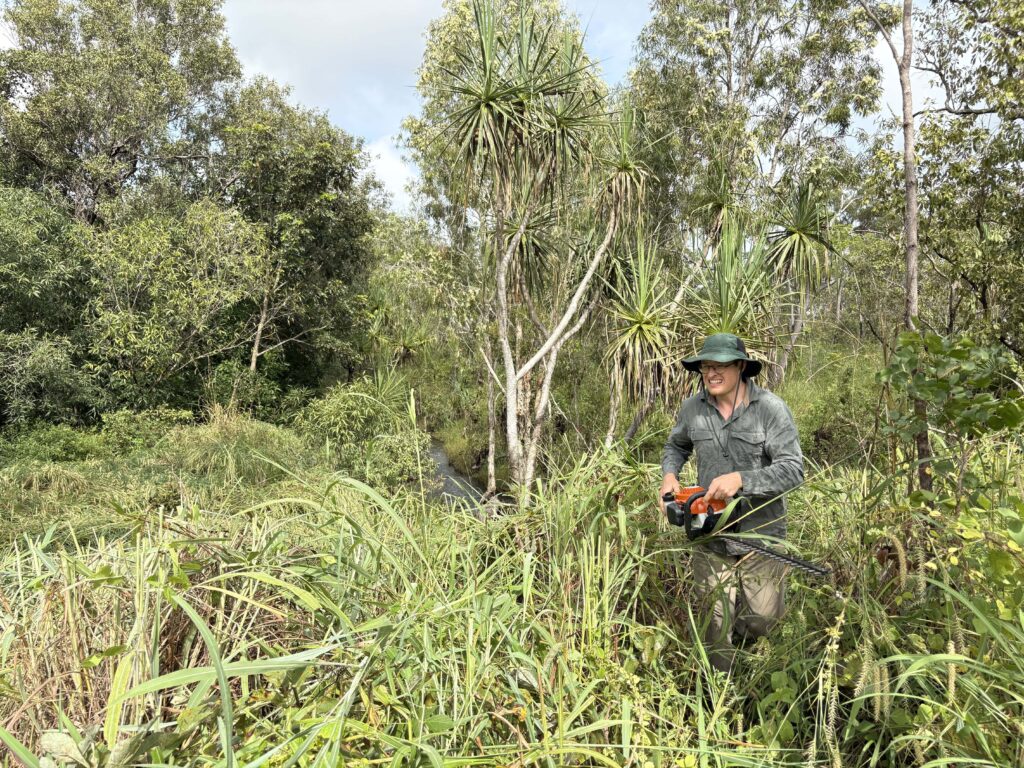
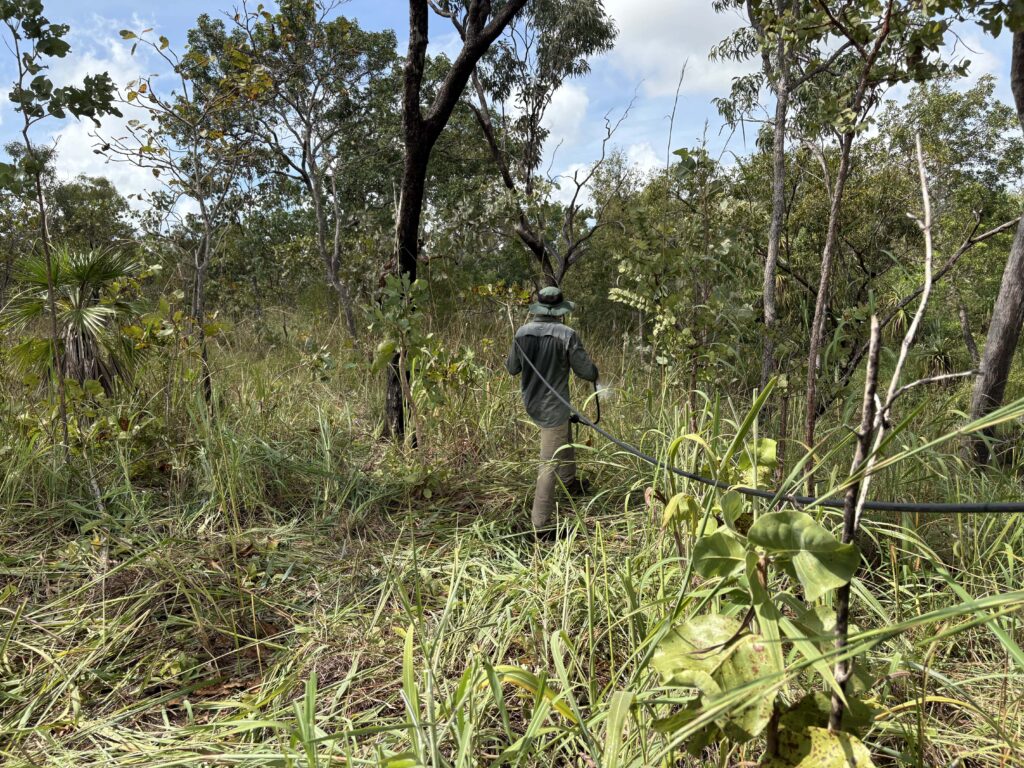
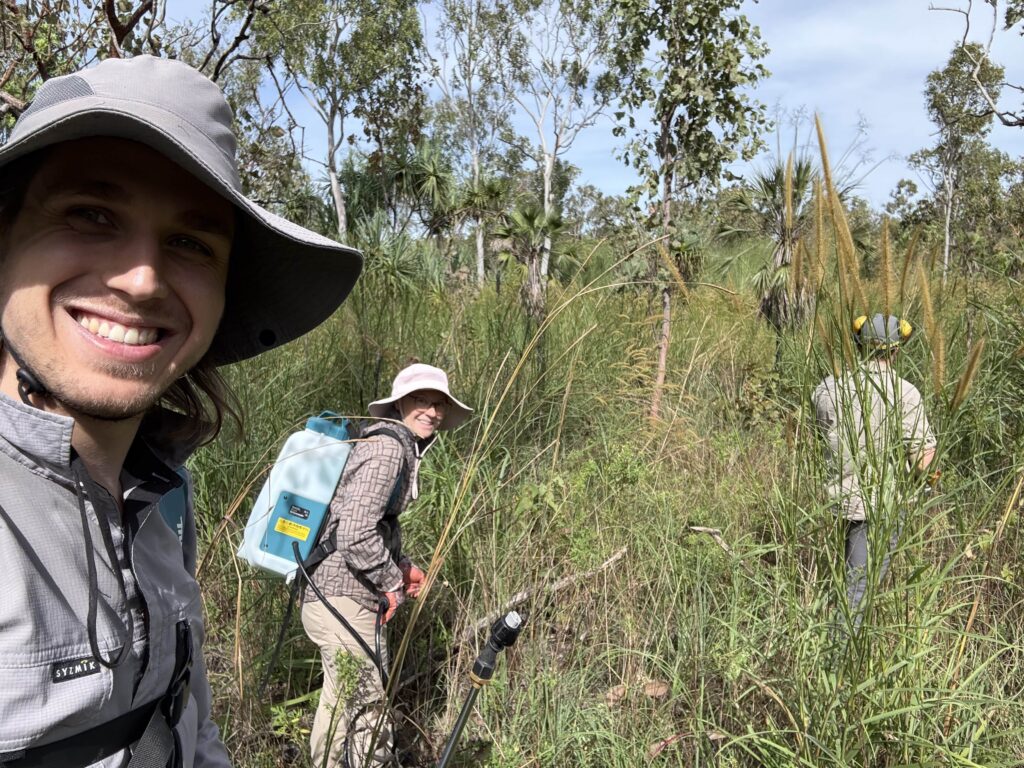
As this work unfolds, the couple begin planning their fire management strategy in concert with neighbouring landholders, which is implemented as soon as they have cleared the weeds. Cara and Etienne use a tractor to create firebreaks, all the while burning swathes of dry vegetation in a controlled manner to mitigate the risk of large bushfires. But improper weeding before controlled burning can degrade the fragile ecosystem still further: Gamba grass seeds will outcompete their native counterparts on this scorched terrain. The risk is compounded by the fact that Gamba grass is far from the only invasive species that they contend with each year: Mission grass, also native to Africa, is just as prevalent and poses a similar fire risk. But with only so much time and resources, Cara and Etienne must win the battle against Gamba grass now so as to fight against Mission grass in the years to come.
How the situation will unfold more broadly depends as much on political will as the emergence of novel mitigation techniques and approaches. The Northern Territory government mandates landholders to either destroy Gamba grass or demonstrate plans to do so. In practice, however, those who take action do so out of an understanding of the dangers posed by the weed. Opening lawsuits against non-compliant small-scale landholders opens the way for similar action against commercial landholders as well as the government, which owns a not insignificant portion of territory. Still, with the weed’s spread showing little sign of abating, the scene for such legal drama may well already be set.
At the same time, emerging international standards such as TNFD, PBAF and SBTN offer businesses and financial institutions guidance on how to assess and report the dangers posed by invasive species across their value chains. Yet, such standards are voluntary and the requisite data still scarce: further research investment is needed to develop on-ground expertise and adapt emerging technologies – such as AI-augmented aerial and satellite imagery, or eDNA – to this task. Still, it is evident that both speed and scale are of the essence: whatever solutions emerge to fill the gaps, there is no time to wait for the good to be replaced by the perfect.
And in the meantime, an unexpected turn of events at Cara and Etienne’s property demonstrates just what is at stake for biodiversity in this particular fight. On a routine morning walk, the couple spot a plant species previously unknown to exist in their locale; further results may even confirm it to be an altogether new species. While the threat posed by Gamba grass is no longer in doubt, the odds are that such certainty is still a conservative estimate.
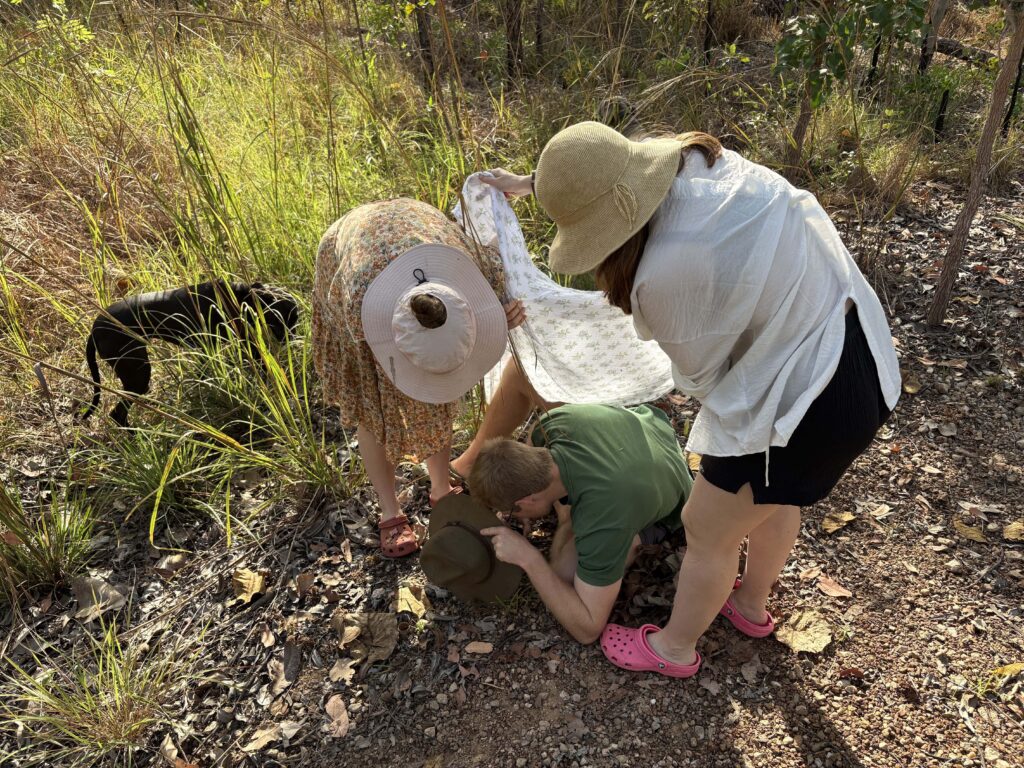
Update: 15 March 2025
Less than two weeks after my departure, substantial wildfires ravaged Cara and Etienne’s block. Thankfully, the couple’s extensive preparations through weeding, fire breaks and controlled burning helped them to preserve their core areas.
But with climate change already noticeably shortening the window between the wet and dry seasons, they will undoubtedly need to refine their strategy in the years to come – both to adapt to, and remain resilient in the face of, the changing balance of nature.
